Hornbill Festival 2024 is a ten-day cultural extravaganza held every December 1-10 to encourage, nurture, and promote Naga tribes and people’s rich, dynamic, and diversified culture. It is the land of mythology and myths, as well as the valiant warriors and hunters lauded in the land’s folk songs. It is organised by the State Government of Nagaland and is the oldest festival of its kind among all the states of Northeast India, having started in the year 2000.
| Festival Date | 1 December 2024 to 10 December 2024 |
| Venue | Naga Heritage Village in Kisama, Kohima |
| Significance | To revive, promote, protect, sustain and showcase the rich cultural heritage and diversity of Naga Tribes |
| Famous for | Tribes & Cultural Events, Rock Contest, Songs and Music |
| Tickets Price | INR 20 – INR 30 per day. Has to be purchased every day to attend the event. |
| Nearest Airport | Dimapur Airport – 2 hr 24 min (73.3 km) via NH29 |
| Nearest Rail Head | Dimapur Railway Station – 2 hr 40 min (78.0 km) via NH29 |
| Nearby Attractions | 2nd World War Cemetery, Nagaland State Museum, Khonoma and Dzuleke Village |
| Where to stay | Hotel Japfu, Hotel Vivor, Hotel Kohima and Razhu Pru or Homestay too. |
Click here to get Hornbill Festival Tours Packages
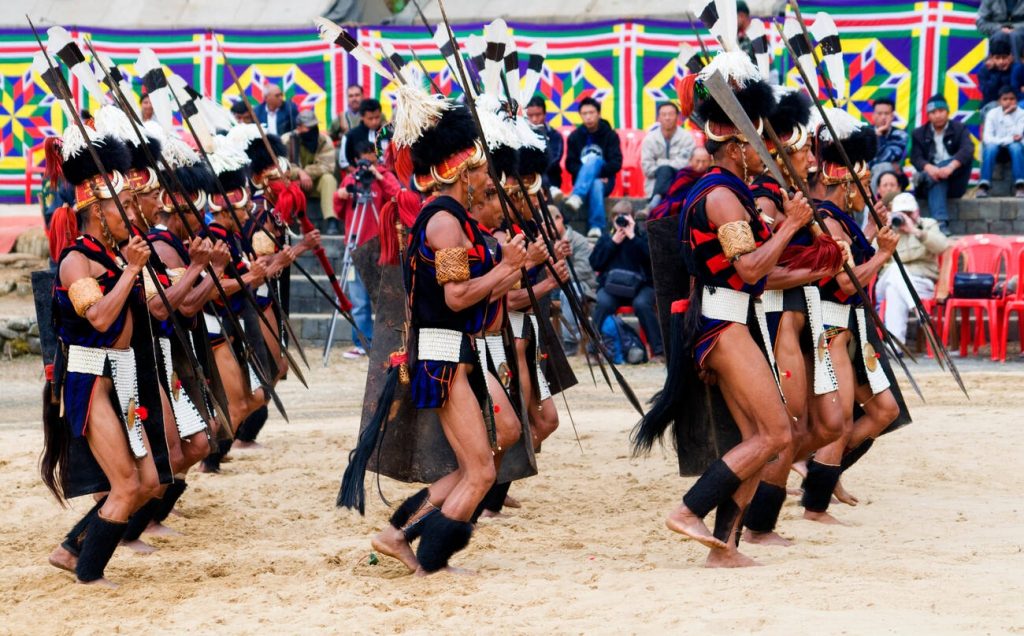

Every year in the month of December, the state celebrates this age-old celebration. For those who are unaware, this is one of Nagaland’s major indigenous warrior tribes’ ceremonies. The Nagas have a long history of preserving their culture and traditions. Travellers from all over the world go to this festival to experience the tribe’s uniqueness and spend time with the inhabitants to learn about their culture firsthand. The Hornbill festival Nagaland is held at the Naga Heritage Village in Kisama, located around 12 kilometers from the capital of the Nagaland, Kohima.
Why is Hornbill Festival Celebrated?
The reason for the Hornbill Festival is any guest’s first question. Or, to put it another way, what is the history of Nagaland’s colourful Hornbill Festival? Hornbill, as the name implies, is the name of a bird that has long been depicted and revered by the Nagas. The importance of this bird is depicted in the traditions and songs sung throughout the event. Naga people and warriors utilized the feathers of this bird to embellish their headgear. This species of bird was on the verge of extinction due to widespread hunting, which was a wake-up call for Nagas too’. Since the festival was first held in the year 2000, it featured folk songs and dancing, traditional games, and even songs from their conflicts while today, it is a great event that attracts people from all over the world to participate.
The Colourful Tribes of Nagaland


There are 16 major tribes of Nagaland: Angami, Ao, Chakhesang, Chang, Kachari, Khiamniungan, Konyak, Kuki, Lotha, Phom, Pochury, Rengma, Sangtam, Sumi, Yimchunger and Zeme-Liangmai (Zeliang); and then there are sub-tribes as well. We heard that the sub-tribes also have their own dialect.
What is the Importance of the Hornbill Festival of Nagaland?
The Hornbill Festival is one of Nagaland’s major traditional warrior tribes’ festivities. The Naga people have a long history of preserving their culture and traditions. As a result, visitors plan their visits and book Nagaland Hornbill Festival excursions in order to experience the tribe’s distinctiveness and spend time with the locals.
Each of the state’s tribes and sub-tribes has unique ways of promoting its culture. There are multi-colored spears and Daos with dyed goat’s hair, in addition to their traditional ceremonial dress, which varies by tribe. Exotic headgears and ivory armlets are two other well-known Naga traditional items that steal the show. Fighters had to prove their bravery to wear these in the past.
Despite the enormous amount of modernism that has entered their lives, the people have maintained their traditions and heritage. The state is known as the ‘Land of Festivals,’ and the people who live here like commemorating the exploits of its old warriors and folk heroes. In addition, medleys that immortalise love stories, folk tunes, and gospel hymns are highly regarded. The festival is named after the Hornbill, one of the state’s most revered bird species. The significance of the bird is expressed in numerous tribe cultural expressions, songs, and dances, which is interesting.
Highlights of the Festival
Religious and ceremonial parades are held.
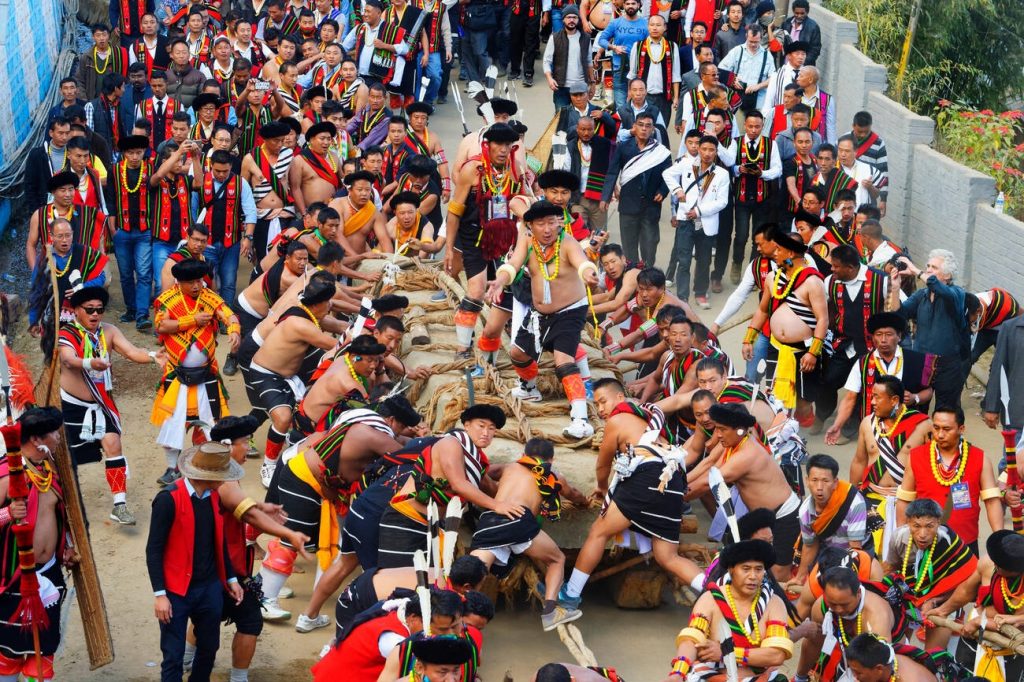

Each tribe has a unique ritual performance that is stunningly beautiful and oddly executed.
The energetic traditional folk dance and musical acts that follow as the activities progress closely portray Nagaland’s cultural heritages.
Sports, crafts, dance, fashion presentations, and beauty pageants are all held. Naga culture and ethnicity are performed and appreciated during the festival to encourage people to compete.
The event is jam-packed with activities such as food fairs, games, songs, musical performances, and entertainment to keep the party going. Traditional art, wood crafts, practical crafts, sculptures, paintings, and wood carvings are all on display. These pieces of art are sold and exhibited. There are also herbal medicine vendors and flower exhibits on display. There are various food vendors serving various cuisines, including traditional Naga cuisine, which is incredibly indulgent. Traditional archery, Naga wrestling, indigenous games, and other athletic sports are popular. The Hornbill International Rock Festival is one of the festival’s main attractions. Indira Gandhi Stadium hosts a variety of local and international rock bands. Throughout the night, the celebrations and concerts are carried on.
Food and Beverage
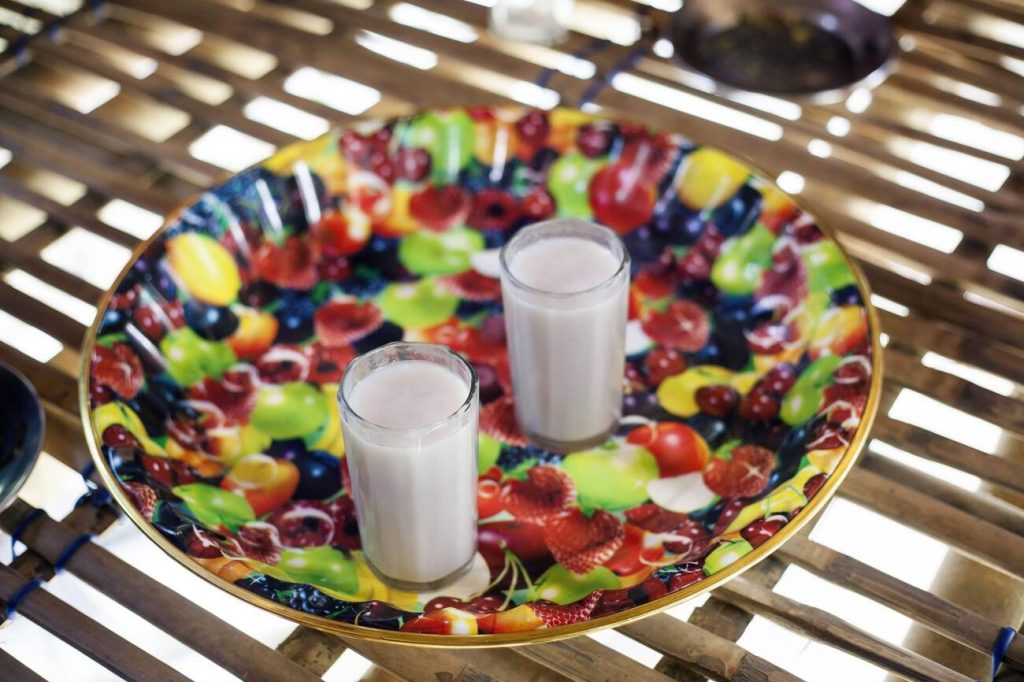

One of the reasons we travel is to eat. After all, sampling local cuisine is akin to getting a flavour of the culture. Hornbill Festival is a celebration of Naga cuisine. After all, Nagaland is a foodie’s dream, particularly for non-vegetarians.Some of the Naga Cuisine delicacies that people can taste at the festival:
Local rice beer is served in enormous bamboo cups with leaf cooked rice cakes, yam patties, roasted millets, and boiling Naga beans. The aromatic brown rice and slow-cooked pork are offered at all Morungs, along with bamboo and beef pickles and superhot Naga chilli chutneys. The way pork is prepared differs from tribe to tribe. The flavour ranges from lip-smacking to taking some getting used to. However, the meat offered is always of the highest quality and juiciest. These guys knew how to cook meat, and we honoured their expertise by feasting in these Morungs every day of the event.
If you’re a vegetarian or don’t eat pork, the Hortispace, which is located across the street from the main venue grounds, is a good option. At the Hortispace, farmers from all around Nagaland display their produce. You can sample a lot of fresh, local, and organic vegetables, such as local tomatoes, little carrots, and a variety of lemons. During the Hornbill Festival, the season’s fruits include oranges and pineapple. Wild mushrooms and persimmons are more exotic. The native avocado, on the other hand, was the most surprise fruit.
Visit the Morungs
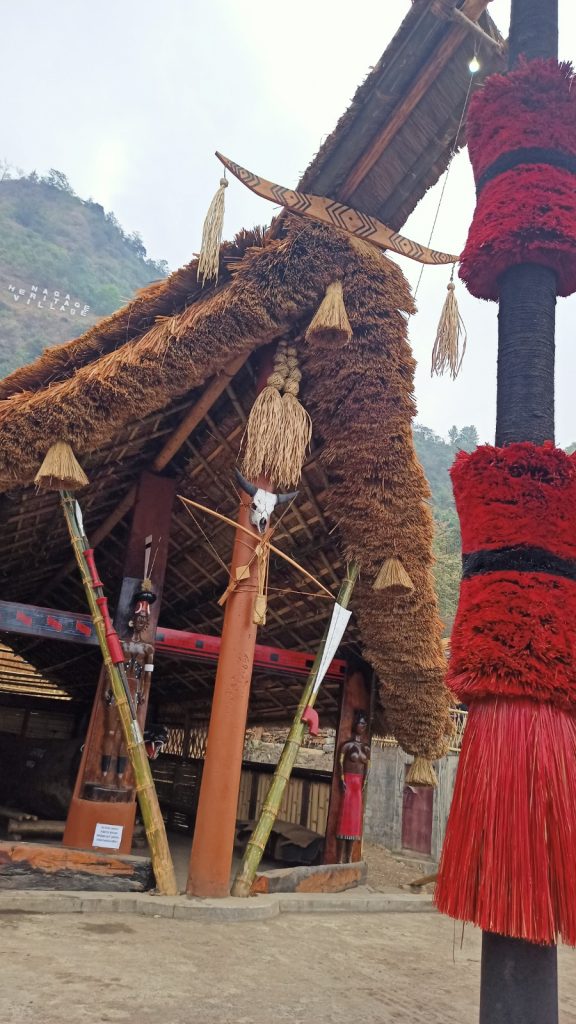

The Morung is a prominent Naga institution that also serves as the social hub for all of the society’s unmarried male members. It is a gathering place for young boys to learn about social customs and beliefs from their elders. The Morung is typically constructed on the edge of a steep slope leading to the settlement’s highest point. It allows Morung members to keep an eye on and safeguard their village from enemy raids and attacks. The Morung has a fancy appearance with an elliptical form of a wide open entrance area with a magnificent piece of single wood log. The designs lavishly carved on the poles and cross beams of the Morung expressed their head hunting practices, fertility culy, emblem of heroism, tectum and sacrifices, and so on. Early in the morning, just before the commencement of the performances, is the finest time to visit them. That is when the performers will dress up, and you will be able to take some wonderful photos. However, before taking any images, please ask them first. Strike up a conversation with the various tribal communities when visiting a Morung. Pose questions to them. Inquire about their lifestyle, culture, and earlier days of headhunting. They will all be delighted to speak with you and tell you some fascinating anecdotes about themselves. The greatest time to converse with the locals is on the first day of the Hornbill Festival. The first day’s cultural performances are usually in the evening, and everyone is in a good mood.
Souvenir Shopping
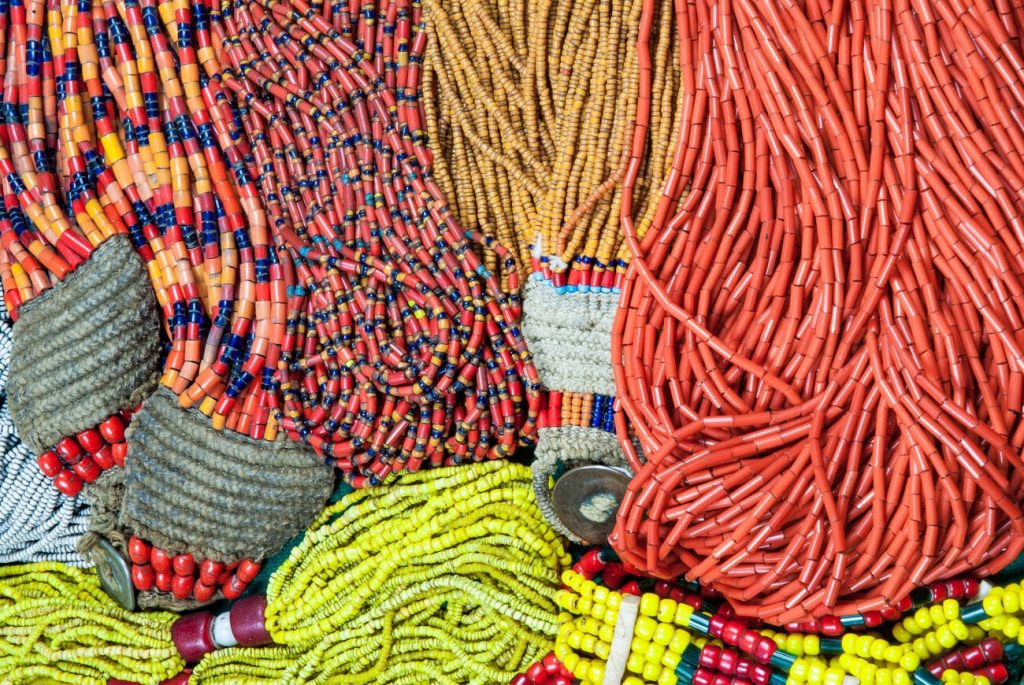

Nagaland may be remote from the rest of India, but it is not when it comes to fashion and craftsmanship. This fascinating country is well-versed in both contemporary and traditional design. Nagaland’s craft and art may be traced back to a long line of forefathers, and it is still widely practised in today’s generation. The fact that local artists put persistent stress, time, and attention into untangling each thread or weaving bamboo strands to make a work of art is a difficult task may be what draws to all visitors while shopping in Nagaland.
Nagas wear a lot of traditional ornaments and accessories. Beads, wood, silver, brass, ivory, and animal bone make up the majority of them. Many tribes have a history of hunting and use coloured animal hair to beautify themselves. While you may not be able to purchase bone jewellery, you can certainly purchase and try on some beaded jewellery.
The Nagas wear brightly coloured outfits. Their traditional clothing is produced in the style of their ancestors. Feathers from hornbills are also utilised in headgear and clothing. Each of the 16 tribes have their unique set of outfits. Most importantly Naga shawls can be the best and the most useful souvenir. The shawls are also designed differently for each tribe. In addition, the shawl’s pattern reflects a person’s function in the community.
The Naga shawls are vibrant in colours. The blood of the adversary was symbolised by the red of the shawl. The blue came from the leaves of plants that were grown specifically for this purpose on the borders of the settlement. The Nagas believed that their magical spells might ward off their foes. By looking at the shawl he’s wearing, you can figure out what social rank he has. Besides, these are really cozy and warm which will protect you from shivering at any cold places.
Rock Concert and Music at Hornbill Festival Nagaland
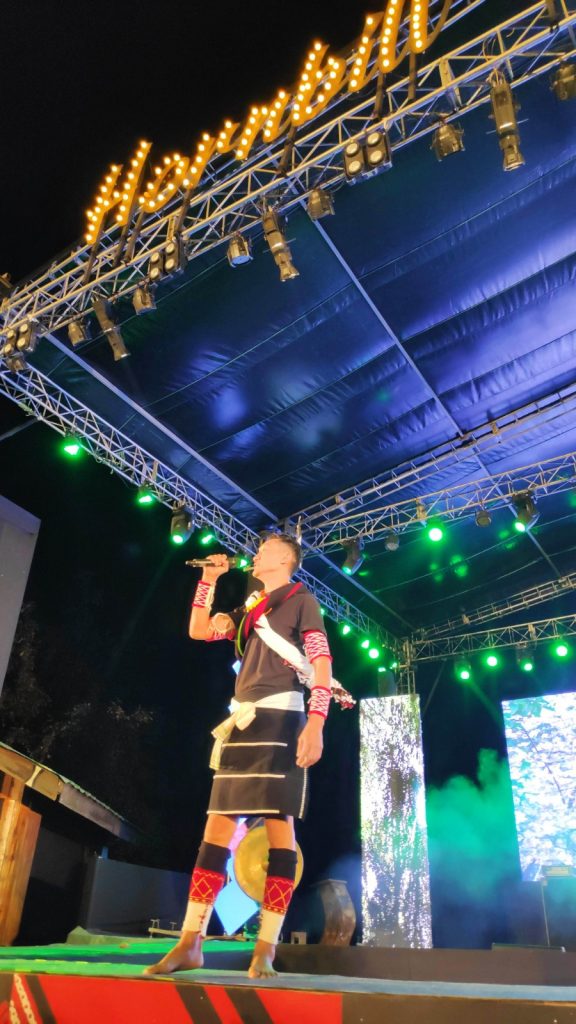

Nagaland is famous for its western music. In fact, rock music is well-known throughout the Northeast. Hornbill Festival also feature a few rock music performances.
The Hornbill International Rock Contest has been dubbed The Great Hornbill Rock because it was cancelled in 2019. It used to be held at the Hornbill Festival location, and rock bands from all around India would compete for a reward. While regular performances will be staged in Kisama, additional concerts will be held in Kohima at various venues.
The top things to do in Hornbill Festival 2024 are-
- Explore the Morungs in Hornbill Festival 2024 –
- Converse with people of different tribes
- Enjoy the traditional and cultural performances
- Taste the local Naga Food at Kisama Village
- Try the local Rice Beer
- Enjoy the Music and Concerts
- Shop for trinkets
- Naga beaded jewellery
- Naga clothes and shawls
How to Reach The Hornbill Festival 2024 ?
First you will arrive at Dimapur that not only has Nagaland’s only railway station but it also has an airport. Dimapur is the border district and town between Assam and Nagaland along the banks of the Dhansiri River. Dimapur once used to be the capital of the Kachari Kingdom.
From Dimapur you have to get to Kohima and will be picked up adjacent to the station. The distance is about 75 km and it takes around 2 hours to reach. It is called the Dimapur-Kohima expressway it is a toll road. The road was previously pretty much undulating or bumpy but it has improved a lot in this year, with a smoother road network you will reach faster than it used to be just some time back.
The festival venue is at Kisama Heritage village, located about 12 km from Kohima. From here, the road network not only connects Kisama, but also towards other villages like Kigwema, Vishwema, Jakhama etc which falls on the same NH2 highway.
Does We Required ILP?
To enter Nagaland, all Indian visitors must get an Inner Line Permit (ILP). The Office of the Deputy Resident Commissioner in New Delhi, Kolkata, Guwahati, and Shillong is where you can obtain the permissions.
ILP is also available when you arrive in Dimapur. To submit an ILP application, go to the DC Office in Dimapur. To complete your ILP by midday, it is best to get to Dimapur early in the morning. Following that, you can head toward Kohima.
The ILP gives a validity of 15-30 days for tourists in Nagaland. You would require a passport-sized photo, your identity, and residency evidence for an ILP. In Nagaland, ILP is valid for 15–30 days.
You can apply your ILP Here Directly too
Hornbill Festival Accomodation?
Kohima– The vibrant capital city, offers a diverse range of accommodation options, catering to various budgets and preferences. To ensure a seamless stay during the festival, we recommend booking your accommodation well in advance, as availability can be limited.
Kisama – The home to the Naga Heritage Village and the heart of the Hornbill Festival, is located approximately 10 kilometers from Kohima. Some visitors prefer to stay closer to the festival grounds by opting for homestays or campsites in and around Kisama. These unique options not only offer cultural immersion but also easy access to festival activities.
Dimapur– The largest city in Nagaland, serves as an alternative accommodation hub, located about 74 kilo-meters from Kohima. It boasts a broader selection of hotels. If you’re arriving by air or train, staying in Dimapur and commuting to Kohima for the festival can be a convenient choice.
Homestay – For a deeper cultural experience, consider homestays and guesthouses operated by local families in nearby villages. These accommodations allow you to firsthand experience Naga hospitality and gain insights into their way of life. To secure your stay, it’s advisable to book in advance.
Campsite – During the festival, temporary campsites are often established near the venue or in picturesque locations. These campsites offer a unique and adventurous accommodation option for visitors who relish camping and being close to nature.
Book Your Campstay At Hornbill
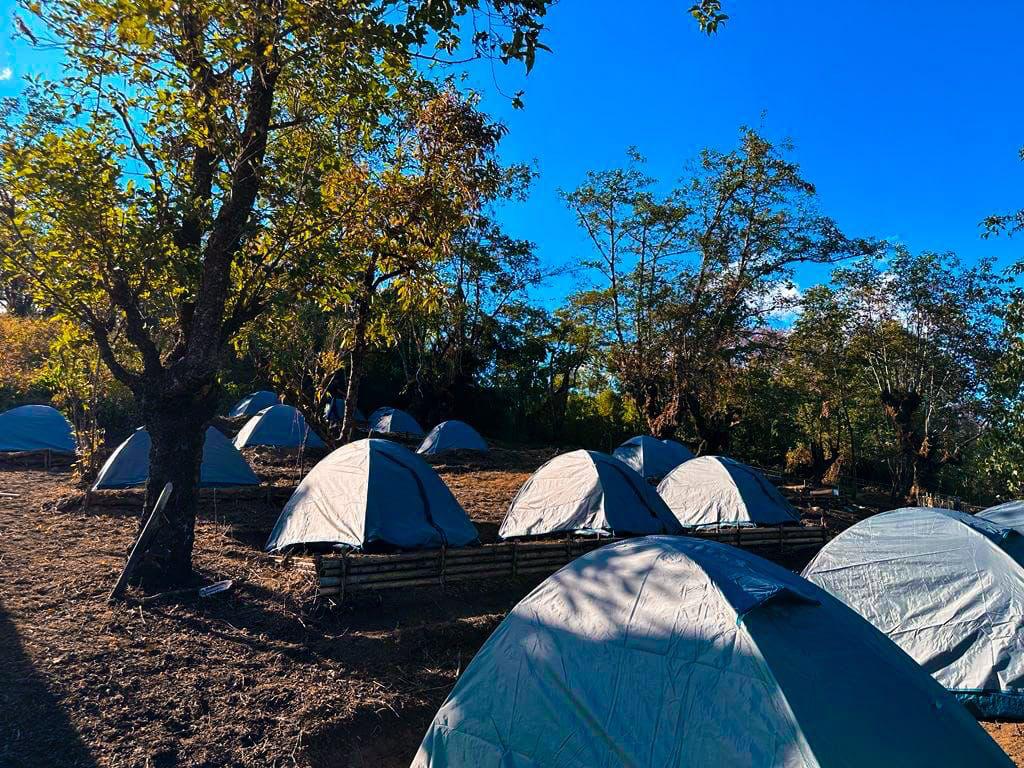

FAQ
What was the purpose of the Hornbill Festival?
The festival aims to celebrate Nagaland’s rich culture, preserve it, and showcase its extravagance and customs. It helps tourists have a deeper knowledge of Nagaland’s people and culture.
Add ImageWhen did Hornbill Festival started?
In Nagaland, the Hornbill Festival was first observed in 2000. The Hornbill Festival has showcased Nagaland’s rich cultural heritage to Indians and visitors for 21 years. The diverse cultural legacy of each Nagaland tribe is on show, which significantly impacts the state’s tourism industry.
Add ImageIs Hornbill Festival Safe To Attend ?
Of course! Hornbill Festival is safe to attend. People all across the world come to attend this gorgeous festival that is held for 10 days. It’s known to be one of the biggest festival in India where all the tribes come together to showcase their culture, cuisines and tradition. Every evening there is a music concert and the crowd is known to be the safest in Nagaland
When is the Hornbill Festival Celebrated ?
Every year, the Hornbill Festival is observed from the 1st to the 10th of December.
When was the Hornbill Festival started in Nagaland?
In Nagaland, the Hornbill Festival initially took place in 2000. For the past 21 years, the Hornbill Festival has exposed Indians and the rest of the world to Nagaland’s rich cultural heritage. During the event, all of Nagaland’s tribes come together to display their rich cultural history while also enhancing the state’s tourism industry.
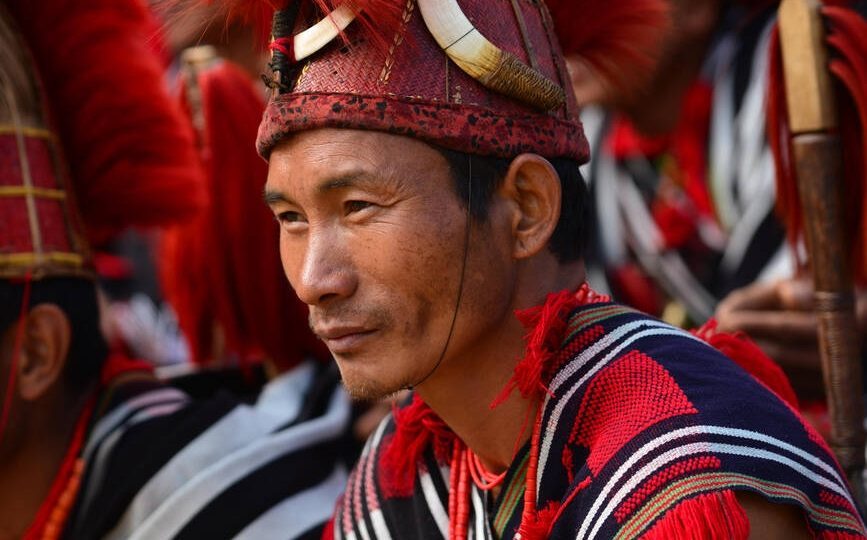
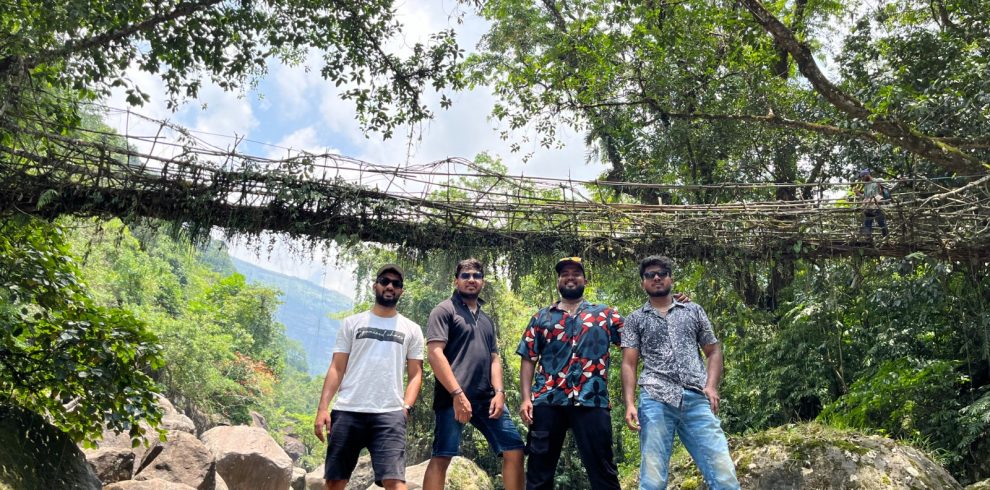
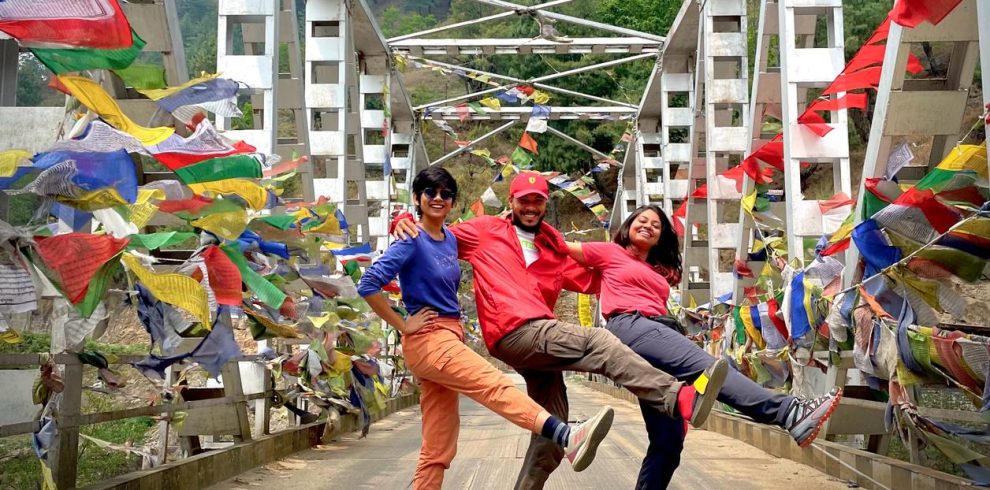
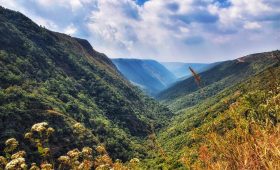

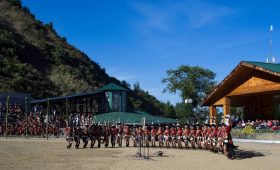
[…] Nagaland is a state known for its vibrant culture, traditions, and festivals. The Naga people have made […]
[…] In the information era, however, such a location could not have remained secret for long. The Hornbill Festival too did a lot of it to make the place […]